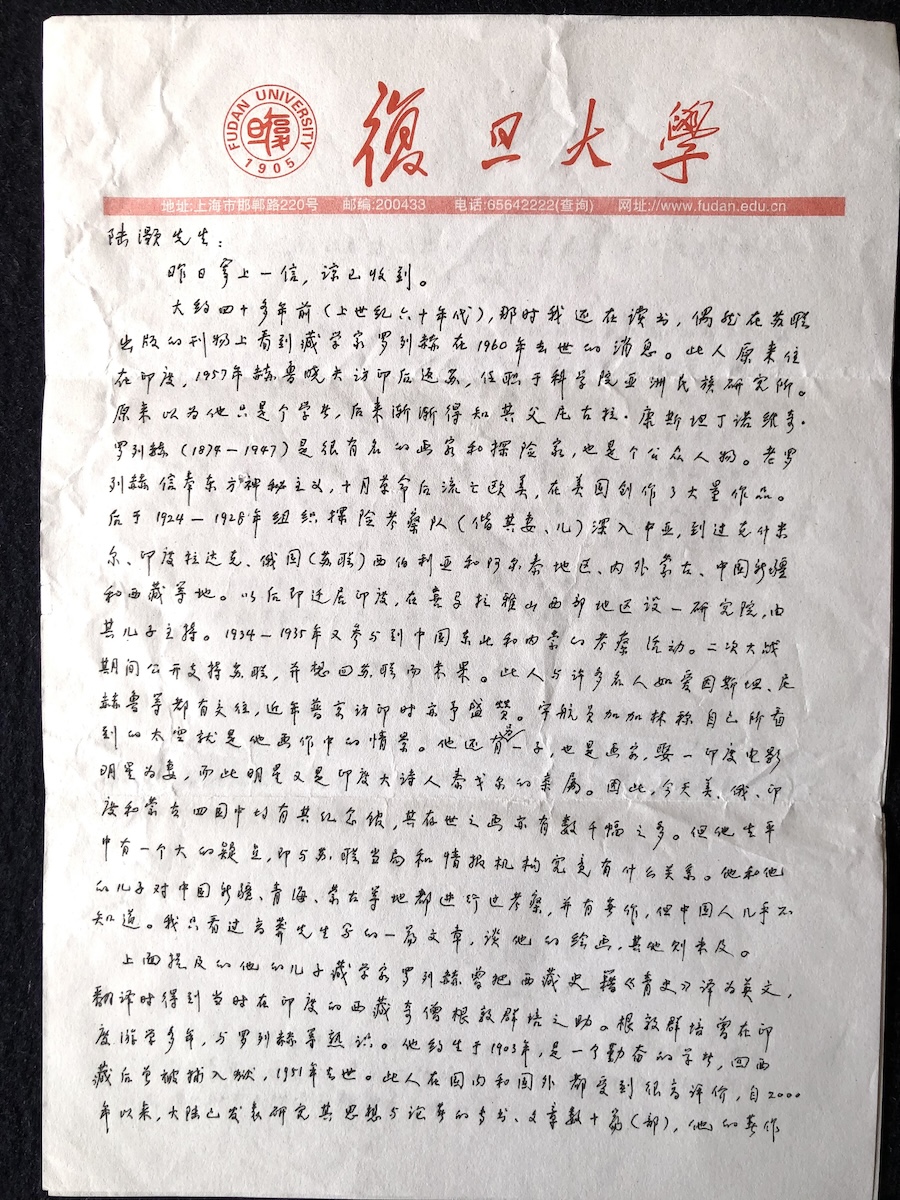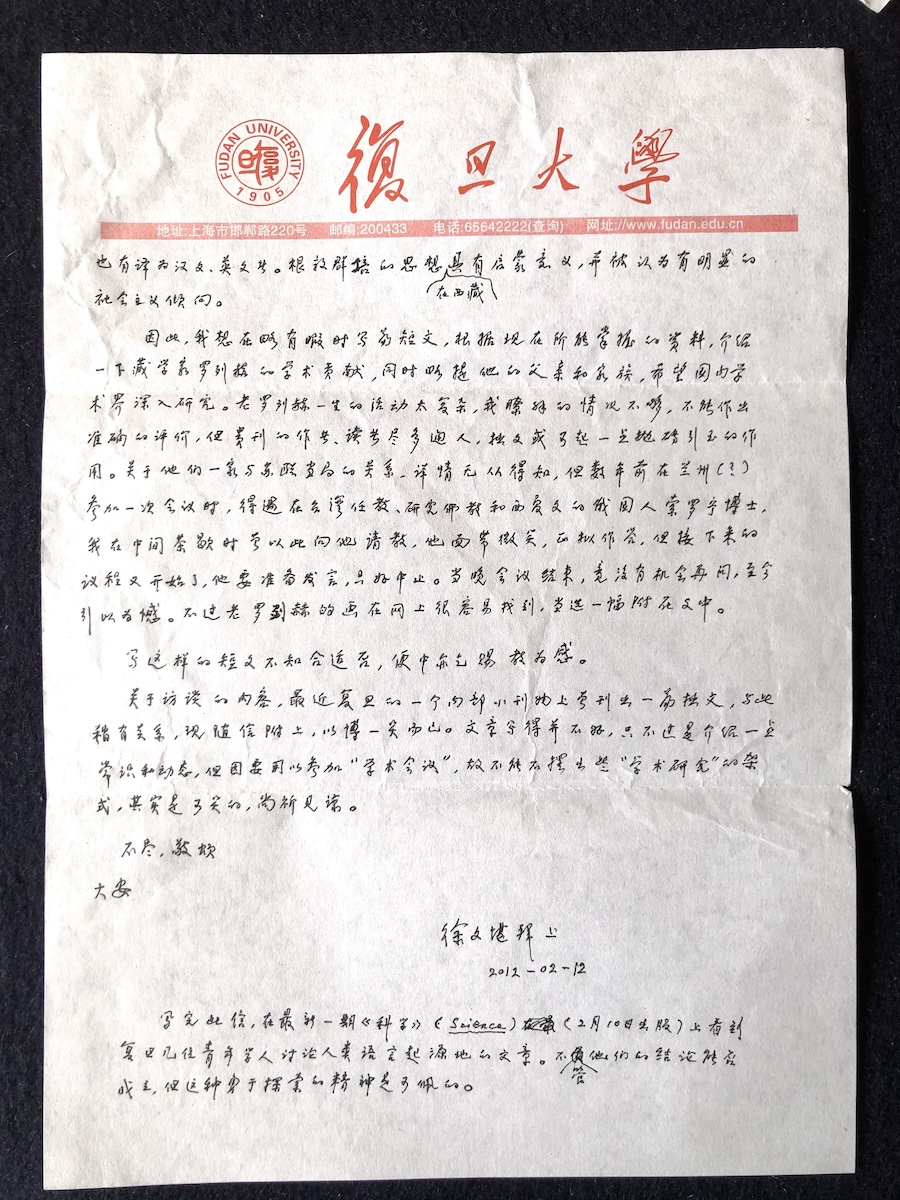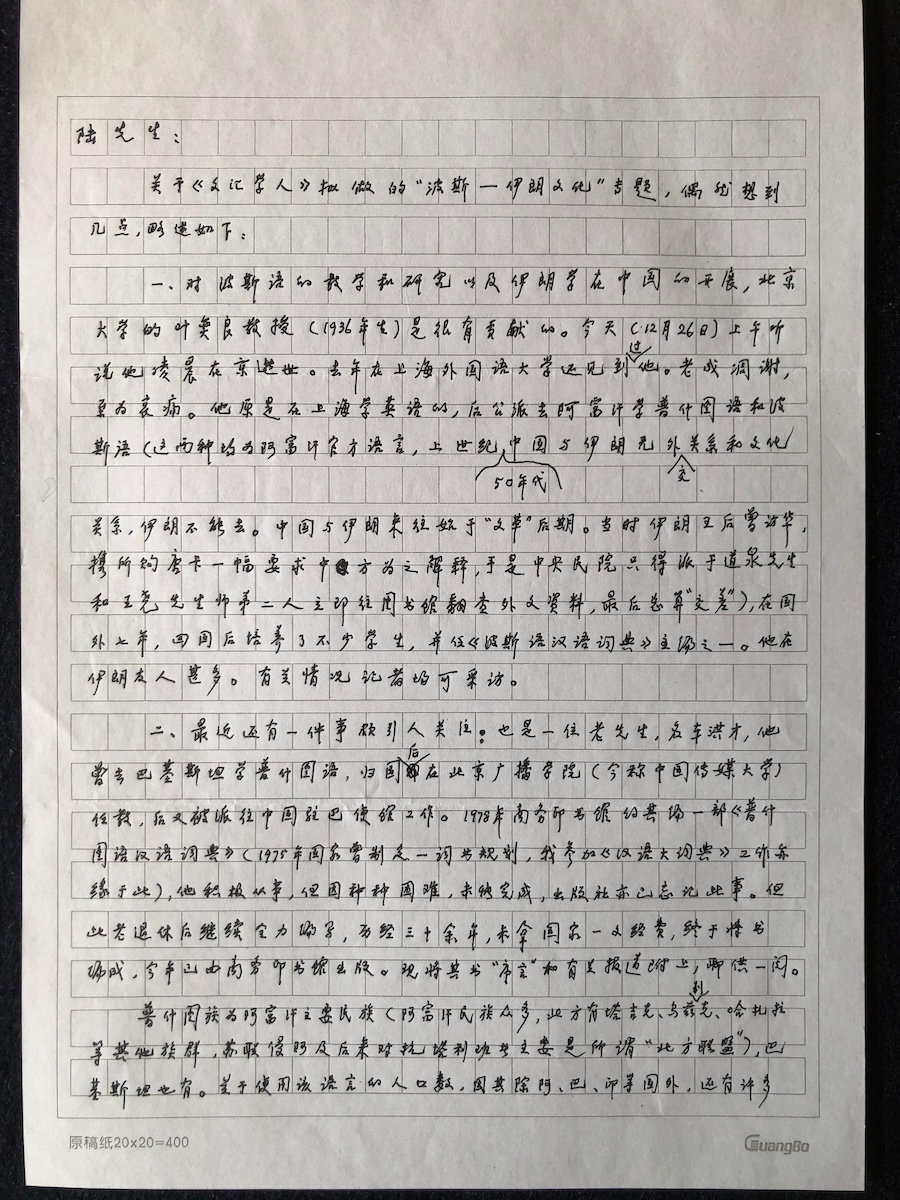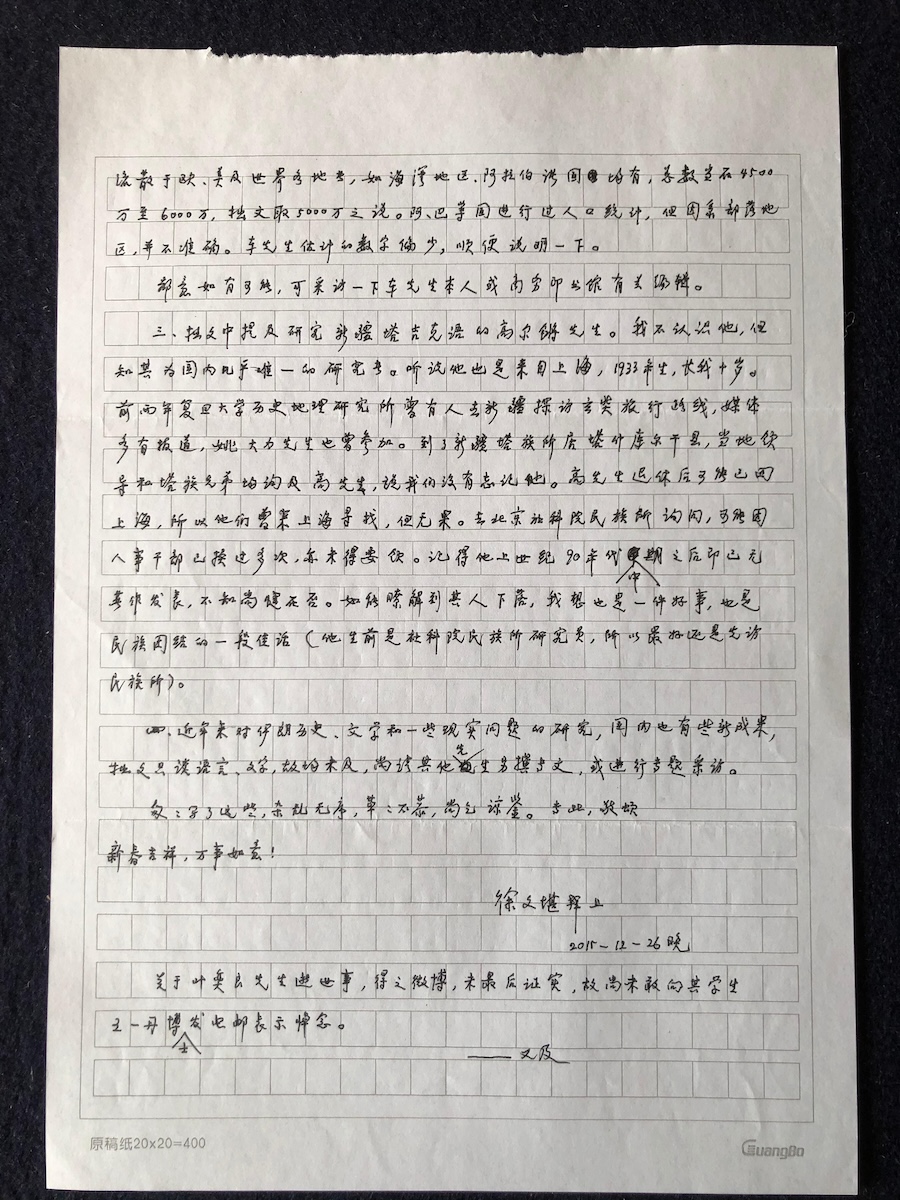A letter writer of / for the 20th and 21st century
Language Log 2025-01-13
Xu Wenkan is well known to readers of Language Log, both because he was memorialized in an obituary here — "Xu Wenkan (1943-2023)" (1/10/23) — and because he was cited in many posts on IE languages (especially Tocharian), Sinitic lexicography / lexicology, and the Sinographic writing system. Today he was featured in a Chinese newspaper article, one year after his passing, and that reminded me of another important aspect of his language skills and activities. Namely, without any doubt whatsoever, he was the most prolific letter writer I have ever met.
徐文堪先生2012年2月12日来信
徐文堪先生2015年12月26日来信
Above are two typical letters from Wenkan, one on letterhead of Fudan University (with which he was affiliated) and one on grid paper. He didn't need the latter to keep his characters neat and regular. From the obituary post:
We began to correspond with each other in the late 70s, already before China opened up.
For decades, countless were the letters that flew back and forth across the Pacific Ocean between us. Mind you, this was in the days before the internet, so we either had to type or handwrite our communications and mail them in the post. When computers and the internet did come, Wenkan shunned them because he was concerned that they would lead to character amnesia, so for many years he preferred to use fax when that became available to us in the mid-80s and occasionally we were in a bit of a hurry.
Eventually, with the help of his son, Wenkan did learn how to write simple Chinese texts on a computer or a cell phone, but he almost never did so. Instead, he would write everything out by hand. If he needed to submit a manuscript somewhere, he could hire a typist who would do it for him. When he sent me messages, he always wrote them out longhand (and a very beautiful, exacting hand it was) on a piece of thin paper. If time was of the essence (which wasn't very often), at first, he would fax the messages to me, but then he scanned them as a pdf and attached them to an e-mail that had just these words:
Please to read the attachment.
Wenkan
All told, I probably have more than five hundred handwritten letters from Wenkan, and I sent the same number to him in Shanghai. Even with the advent of fax machines and scanners, we continued to prefer to send letters by post. When you hold a physical letter in your hand that your friend wrote with ink weeks ago, it's a different feeling from instantaneously receiving a message from them as soon as they write it.
I sent a letter to Mark Swofford in Taipei nearly two weeks before the winter solstice, and he's still waiting for it.
You can't be impatient if you believe in the value and validity of letter writing, the way Wenkan and I did for nearly half a century.
Selected readings
- "Character amnesia yet again: game (almost) over" (4/28/22)
- "Character Amnesia" (7/22/10)
- "Character amnesia revisited" (12/13/12)
- "Character amnesia redux" (4/22/16)
- "Spelling bees and character amnesia" (8/7/13)
- "Character amnesia and the emergence of digraphia" (9/25/13)
- "Dumpling ingredients and character amnesia" (10/18/14)
- "Character amnesia in 1793-1794" (4/24/14)
- "Japanese survey on forgetting how to write kanji" (9/24/12)
- "Kanji amnesia of the week" (7/25/20)
- "Writing characters and writing letters" (11/17/18)
[Thanks to Wolfgang Behr]



